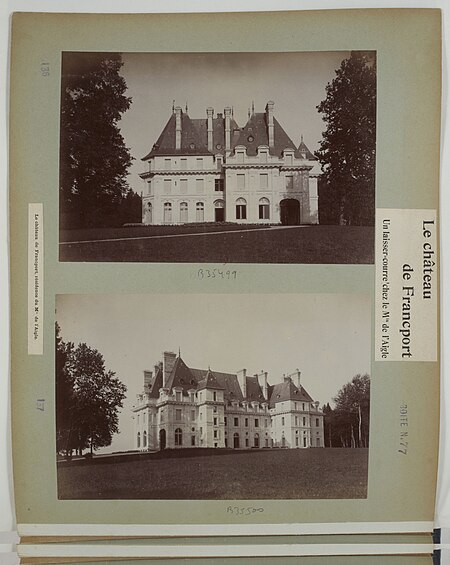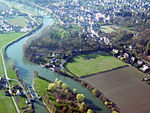Château du Francport

The Château du Francport is an historic château in Choisy-au-Bac, Oise, Hauts-de-France, France. It was built in the 19th century. A photograph taken by Count Olympe Aguado is in the collection of the J. Paul Getty Museum in Los Angeles, California. According to photographer Edward O. Haars for the War Department, this building is where German emissaries were housed during the Armistice negotiations in November 1918 at the Forest of Compiègne. See photos attached with NARA source on the images. Acquired by the Anglo-French Hotel Management Limited to turn it into a luxury hotel, the project fell through in 2009. However, by 2014 it was owned by Terres de Kéops and run as a restaurant known as the Château des Bonshommes.
Excerpt from the Wikipedia article Château du Francport (License: CC BY-SA 3.0, Authors, Images).Château du Francport
Chemin du Vivier du Grès, Compiègne
Geographical coordinates (GPS) Address External links Nearby Places Show on map
Geographical coordinates (GPS)
| Latitude | Longitude |
|---|---|
| N 49.435 ° | E 2.9218 ° |
Address
Château des Bonshommes
Chemin du Vivier du Grès
60750 Compiègne
Hauts-de-France, France
Open on Google Maps








